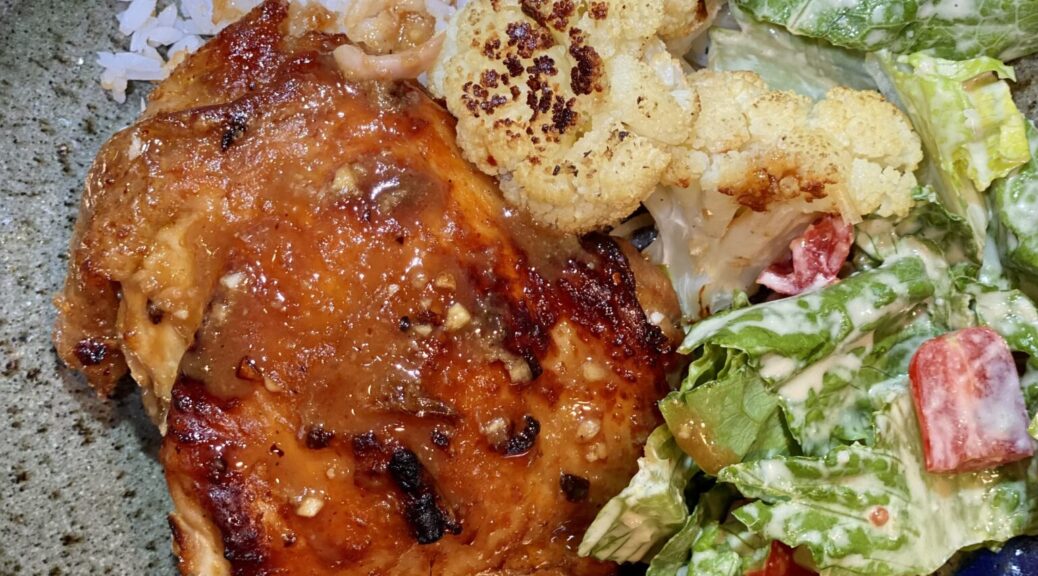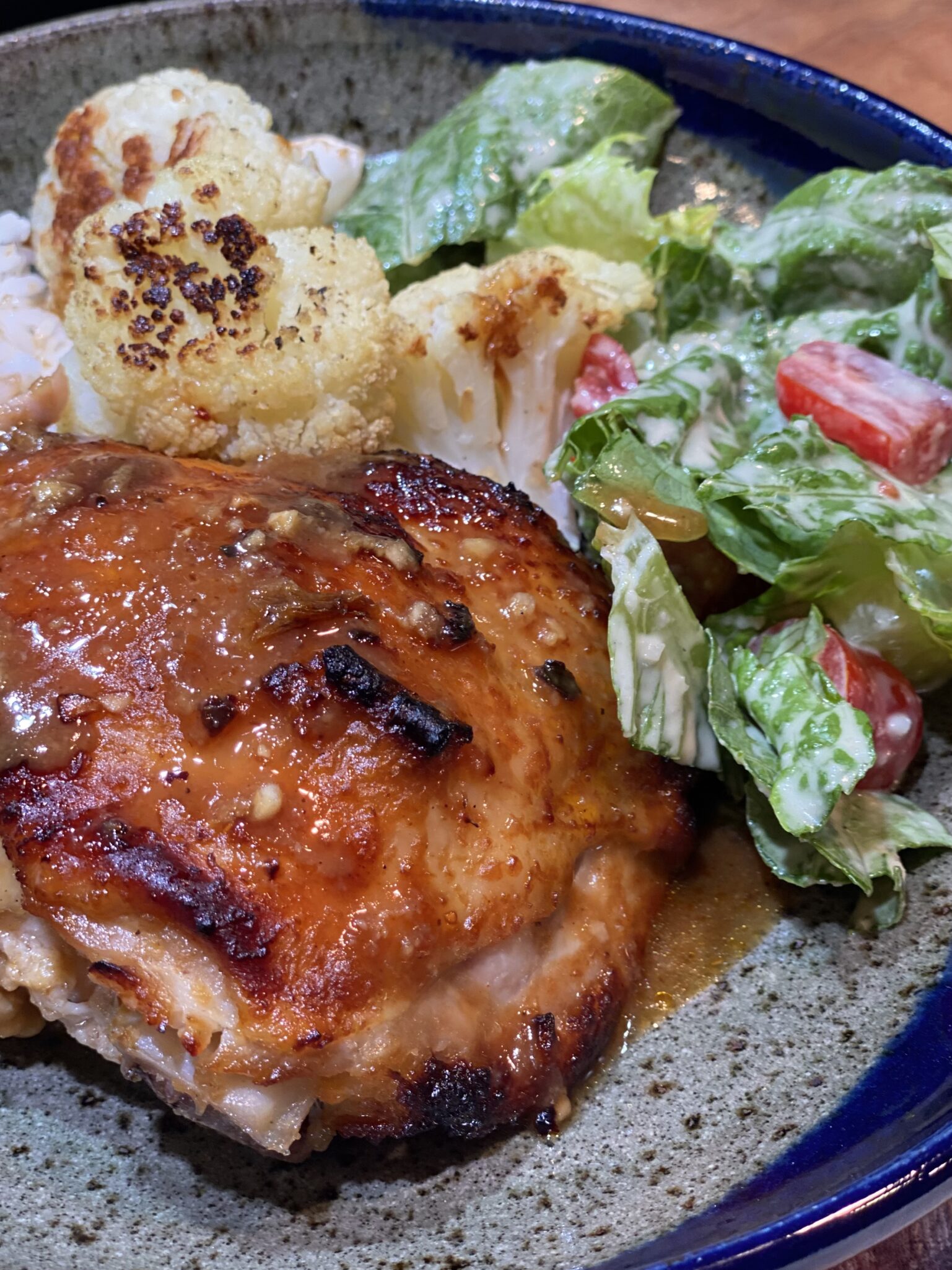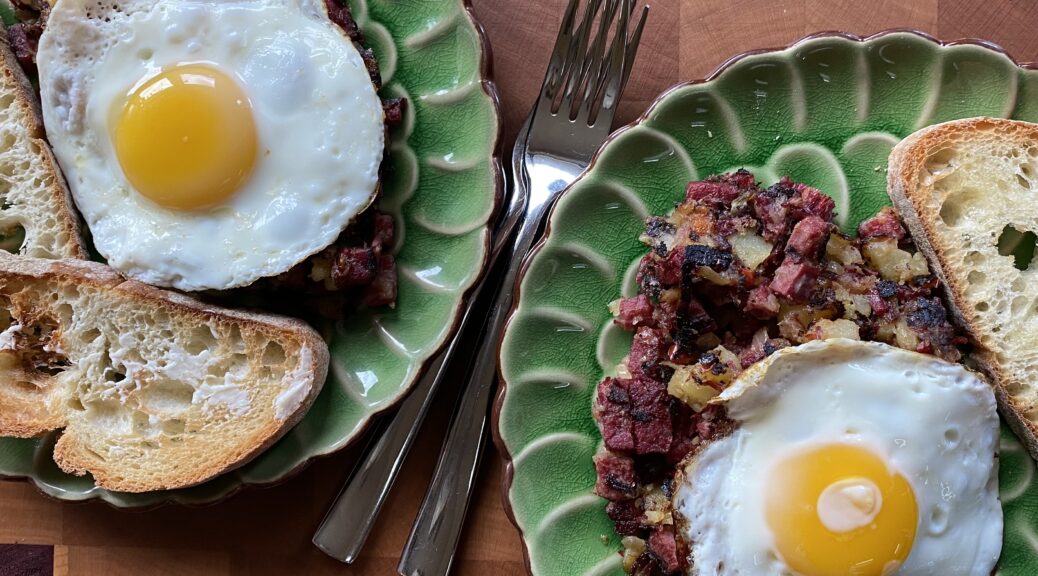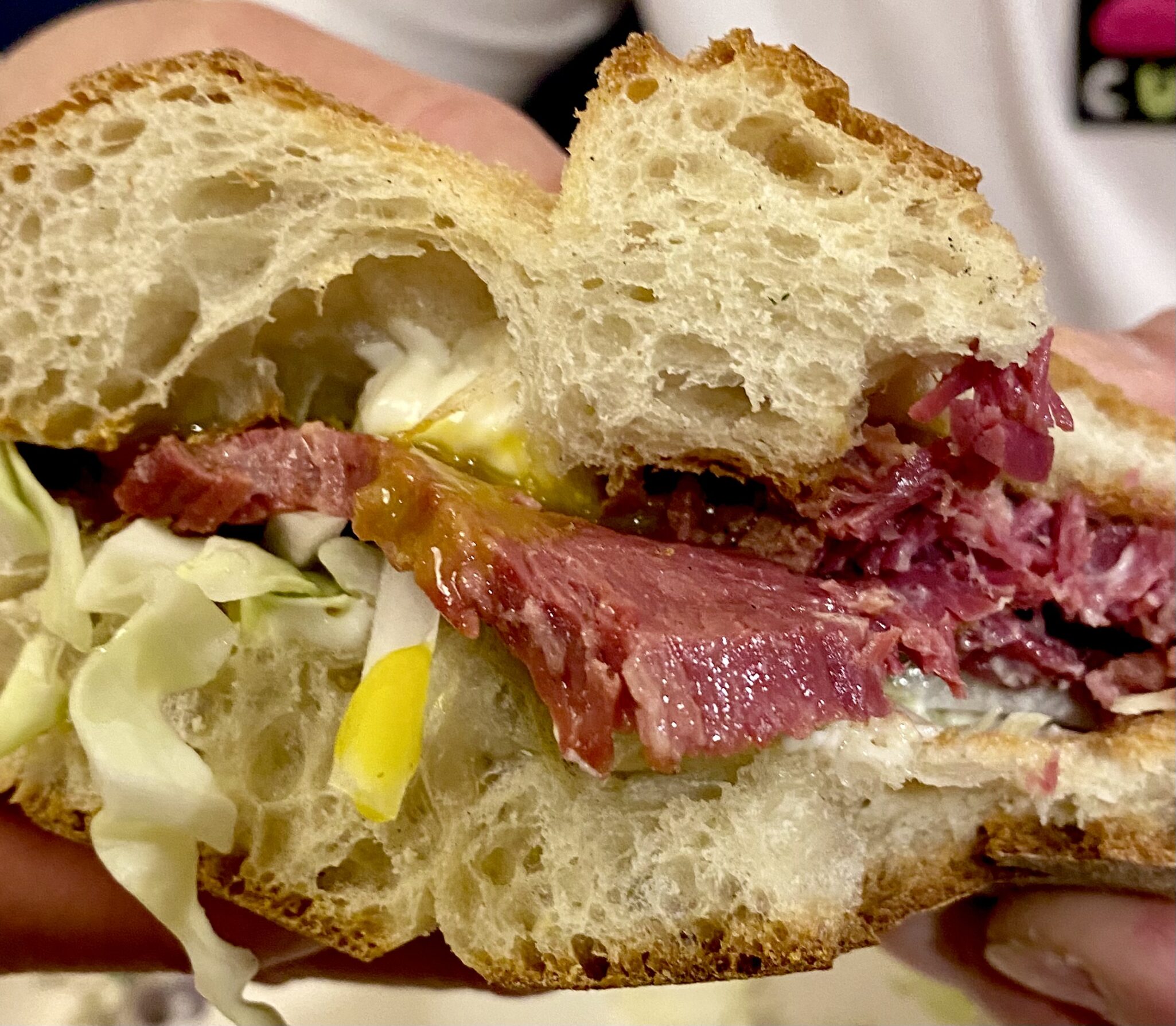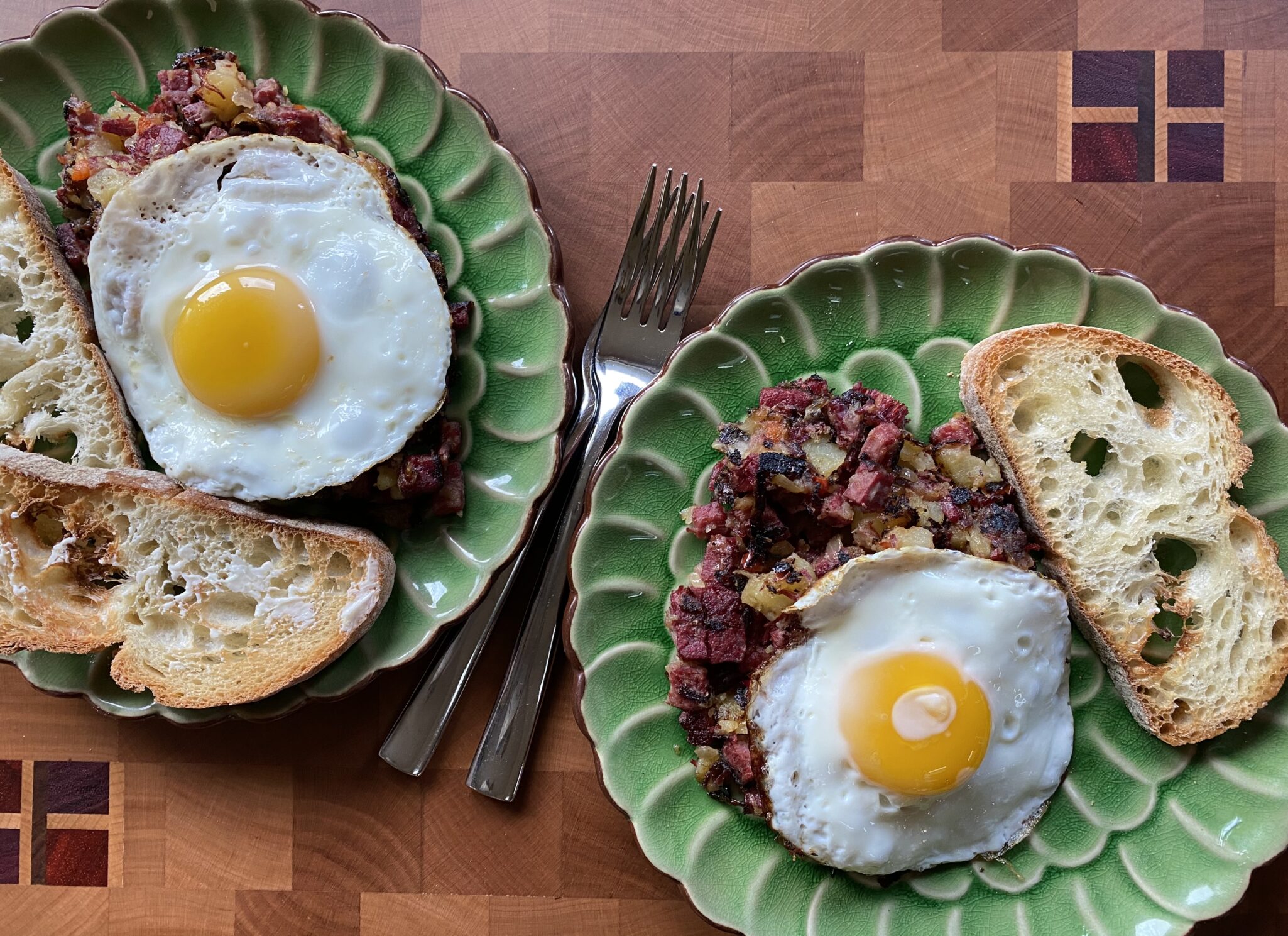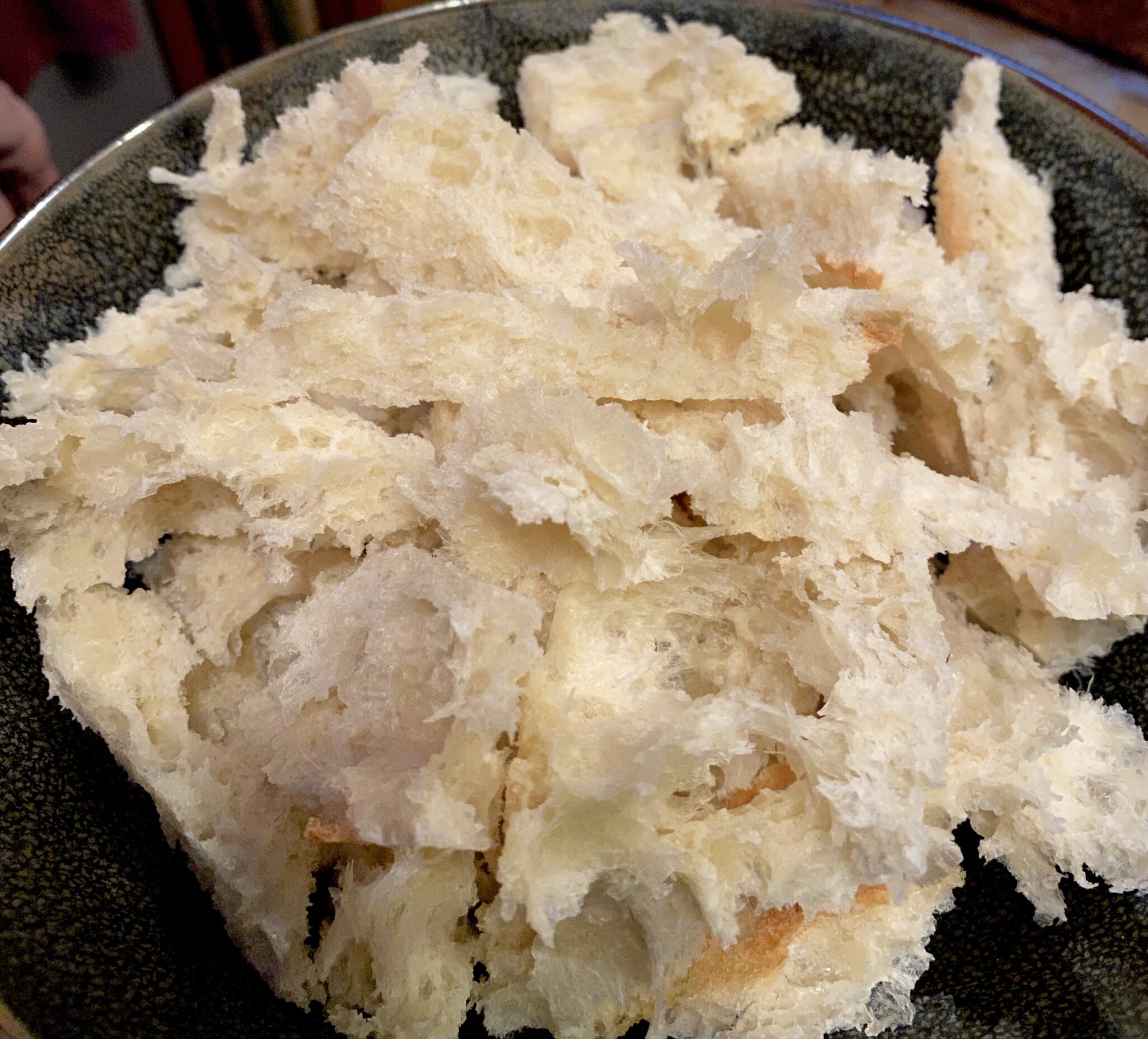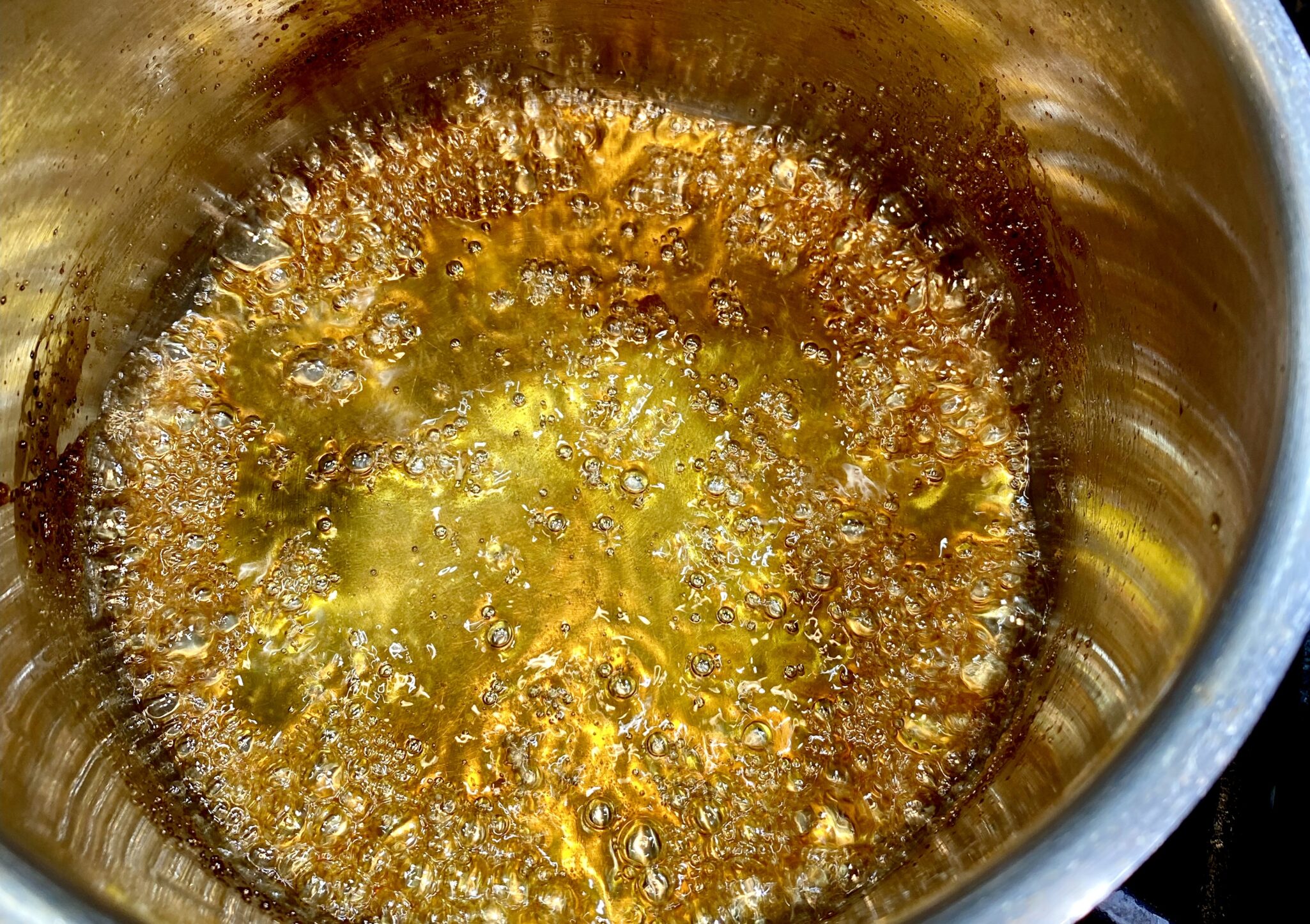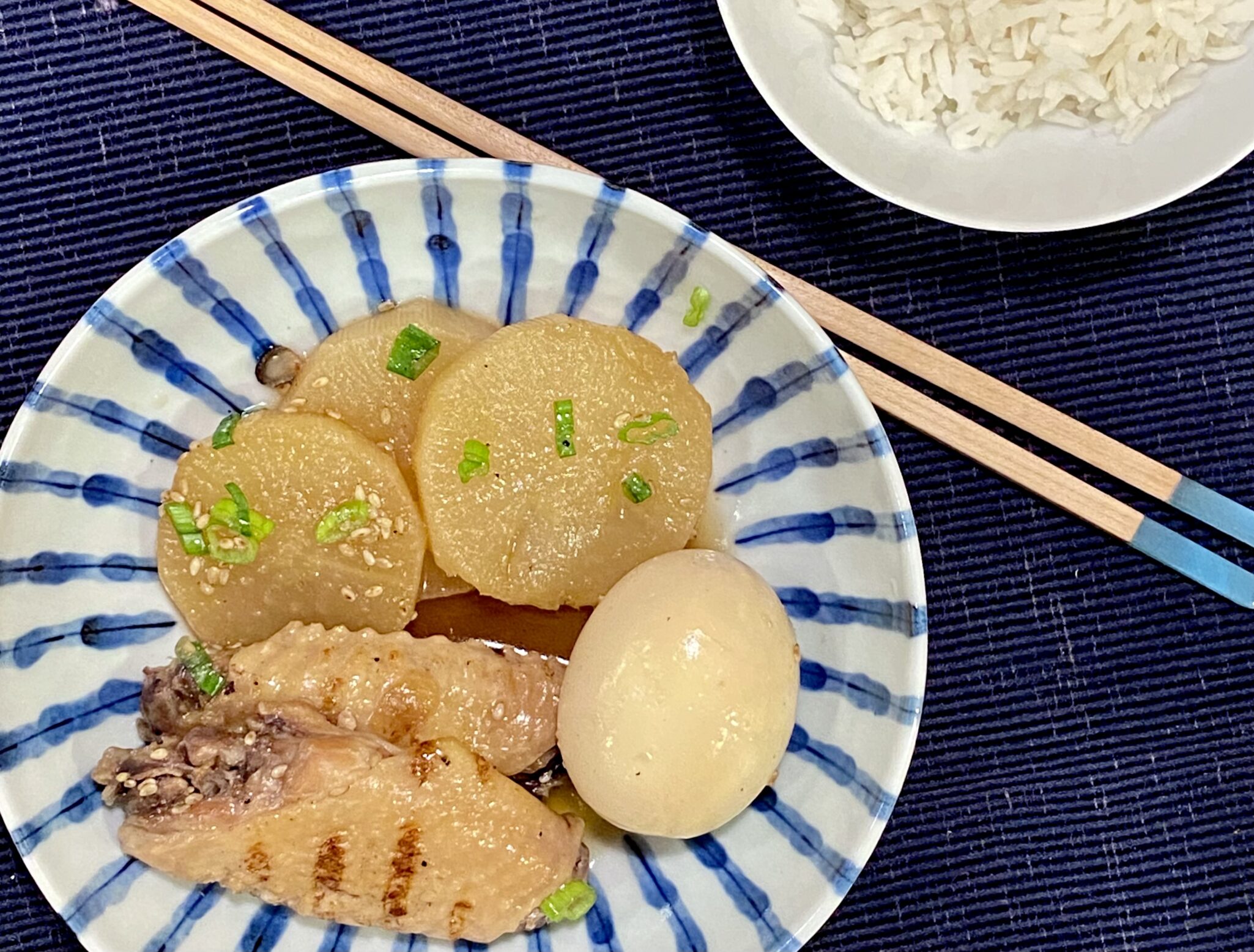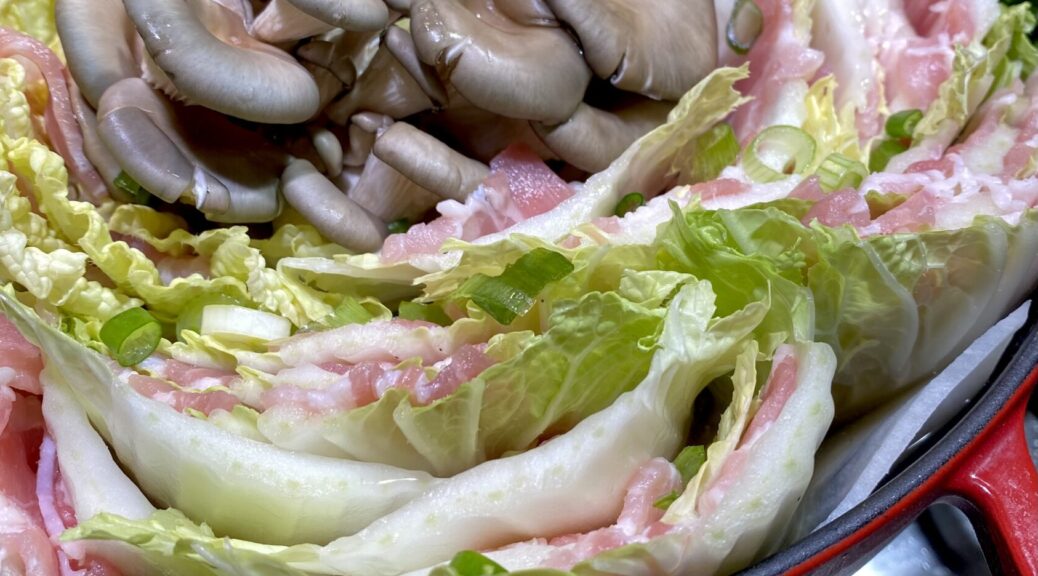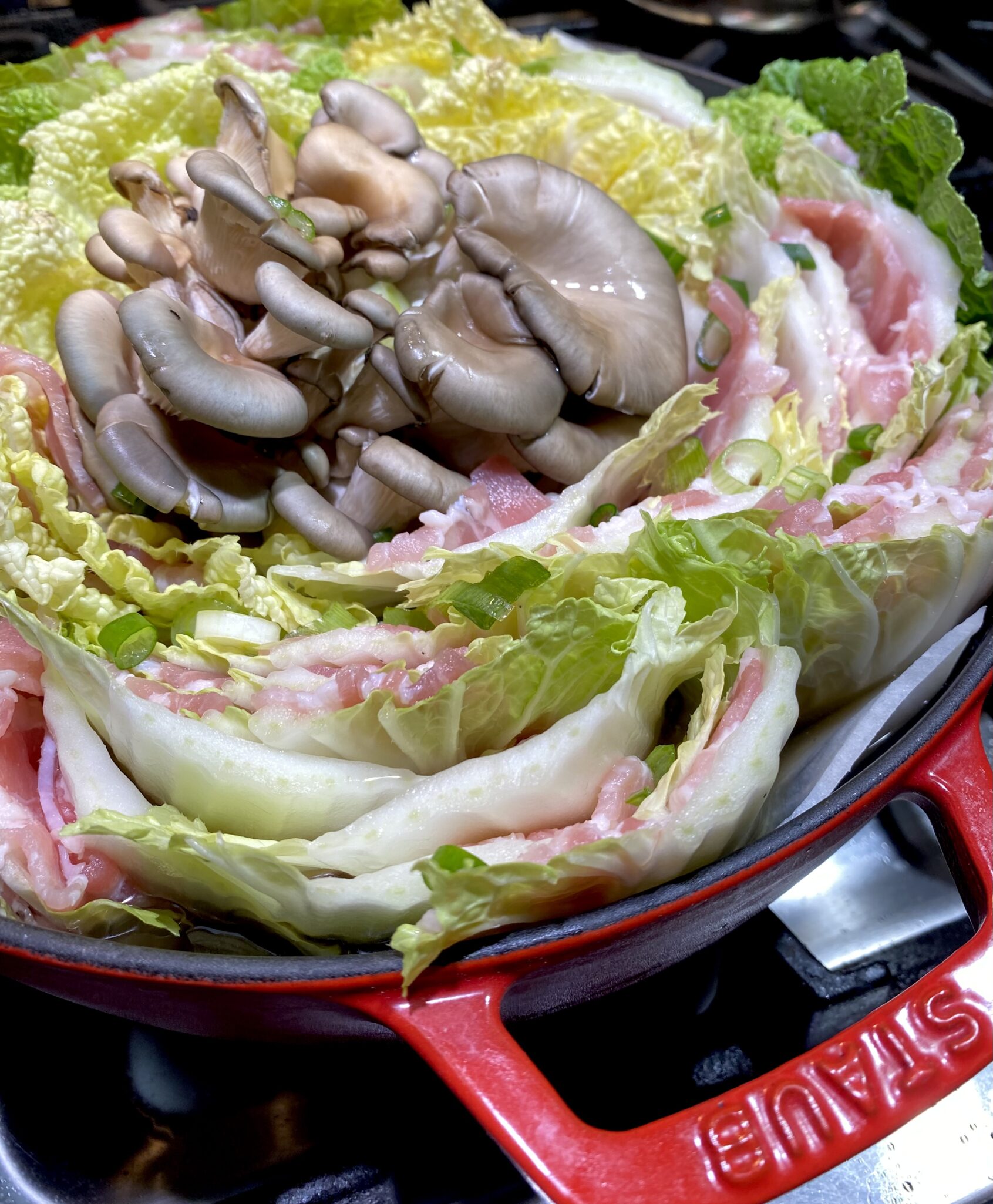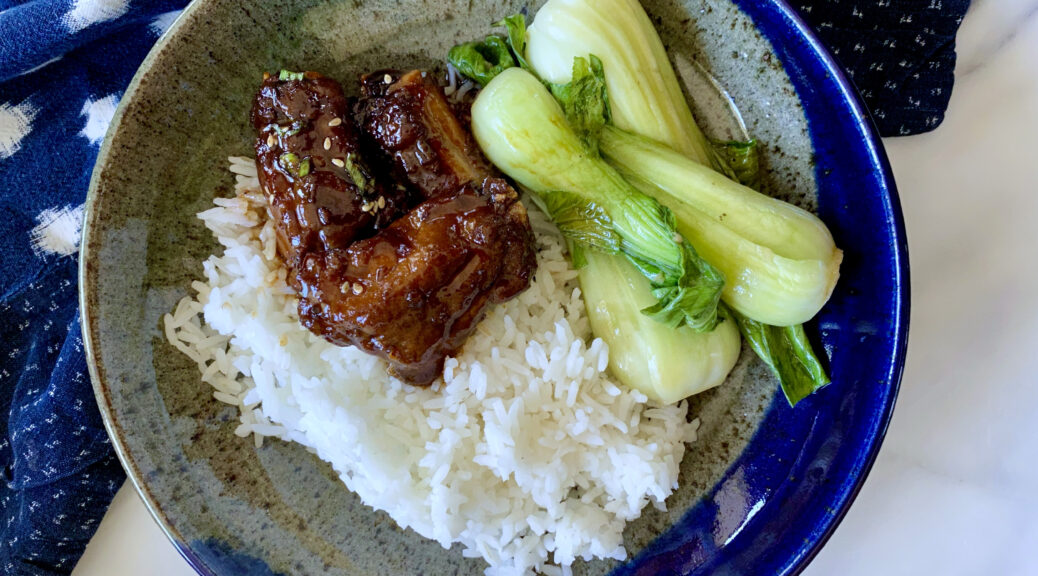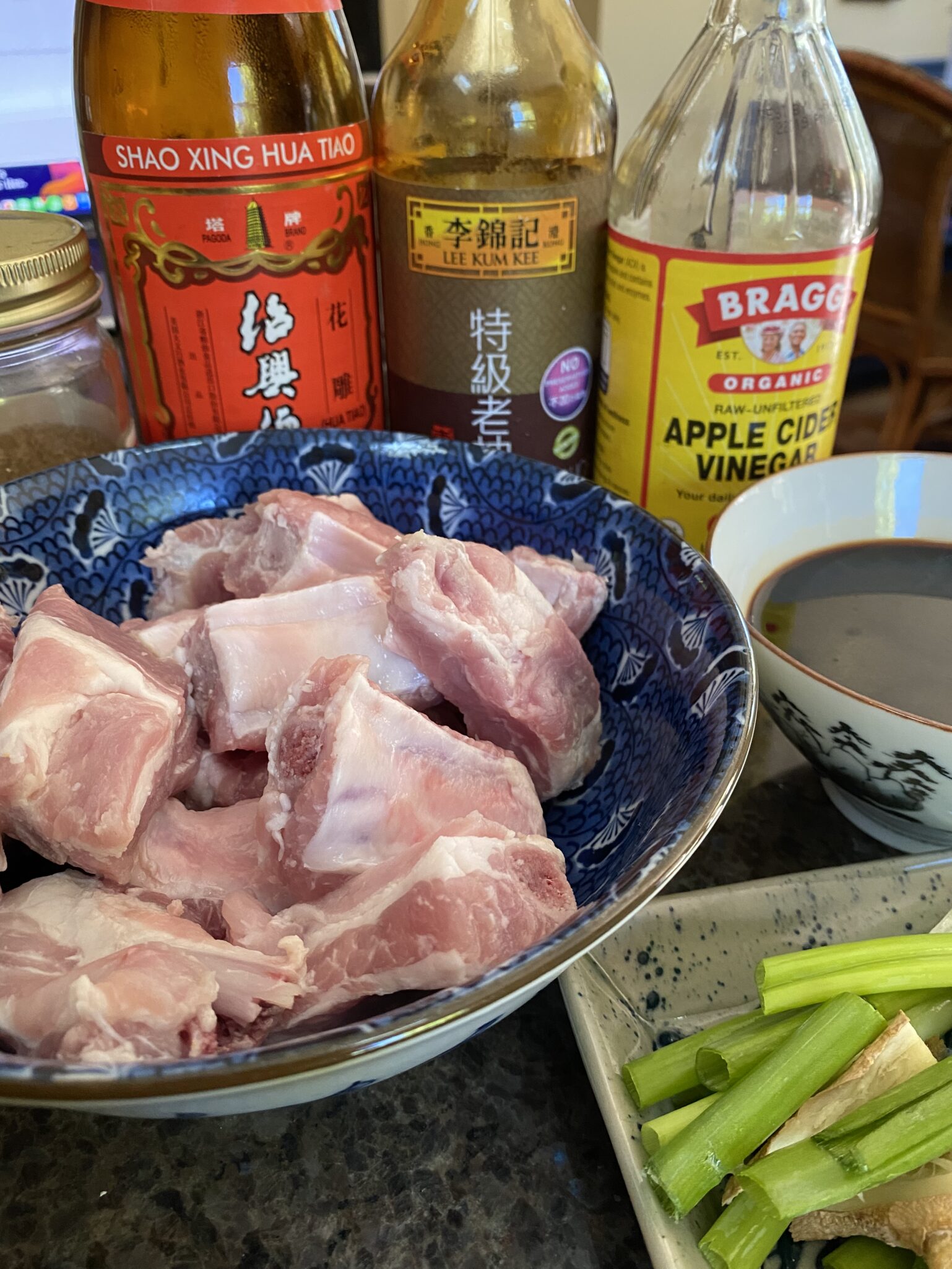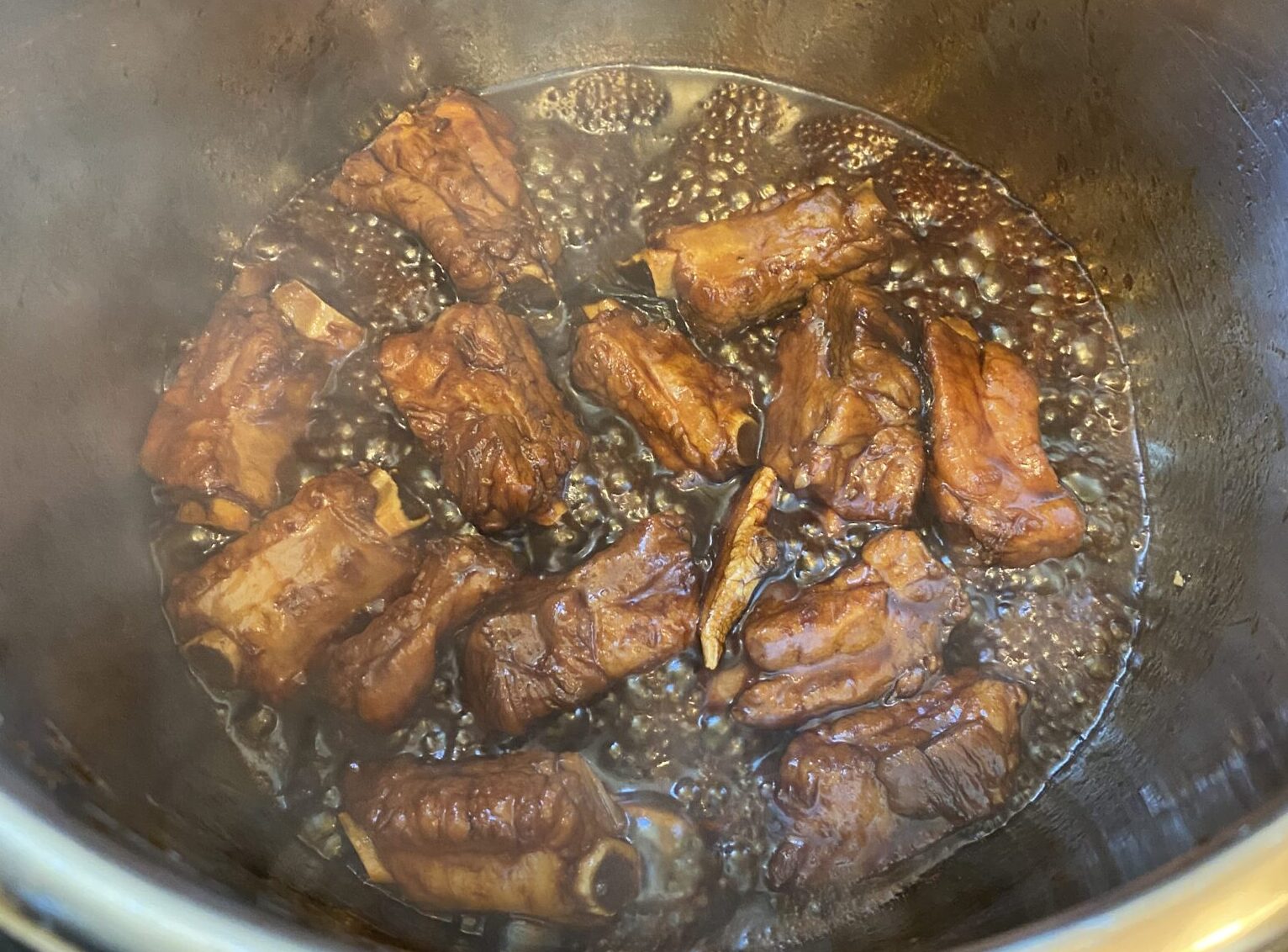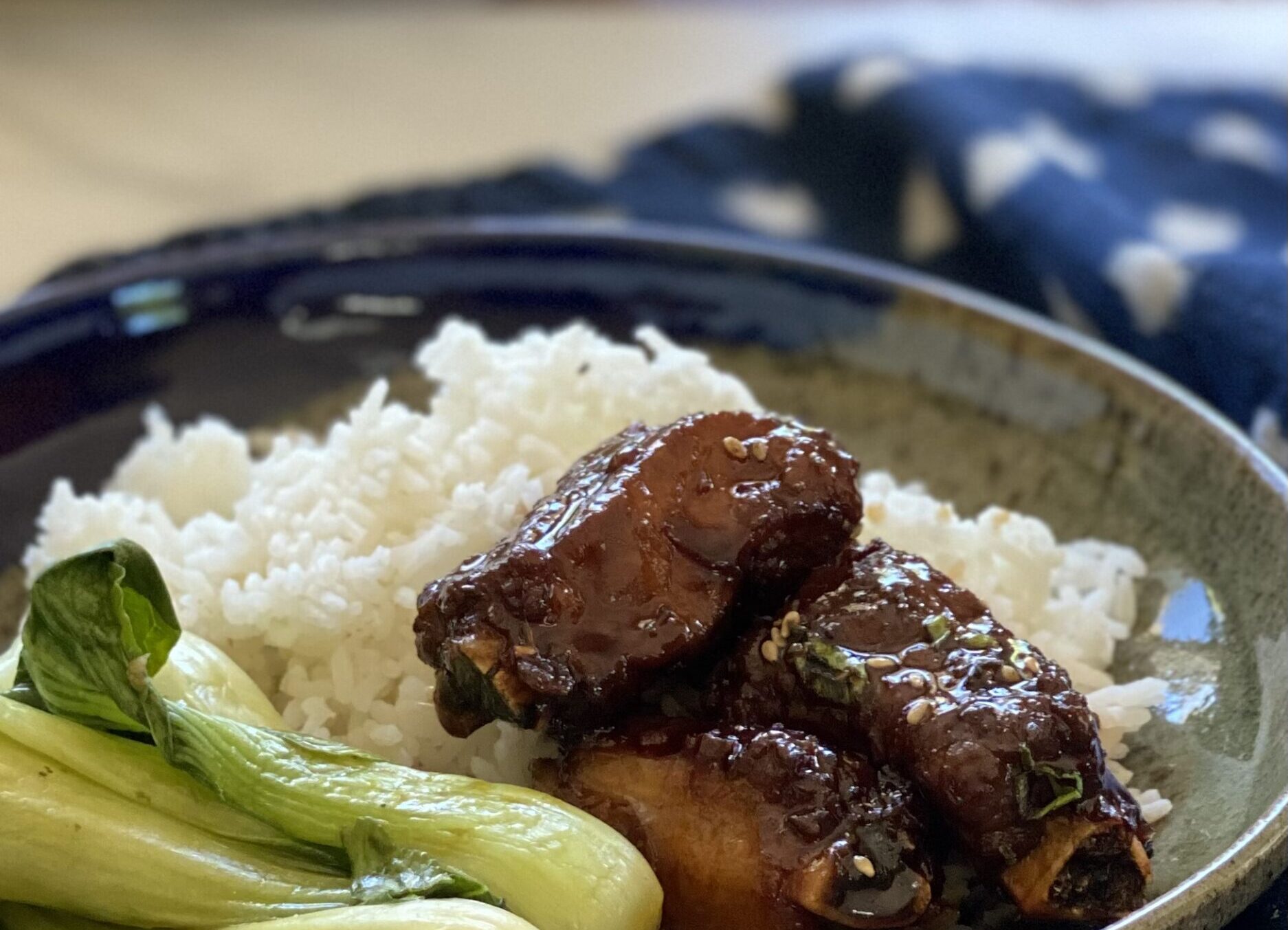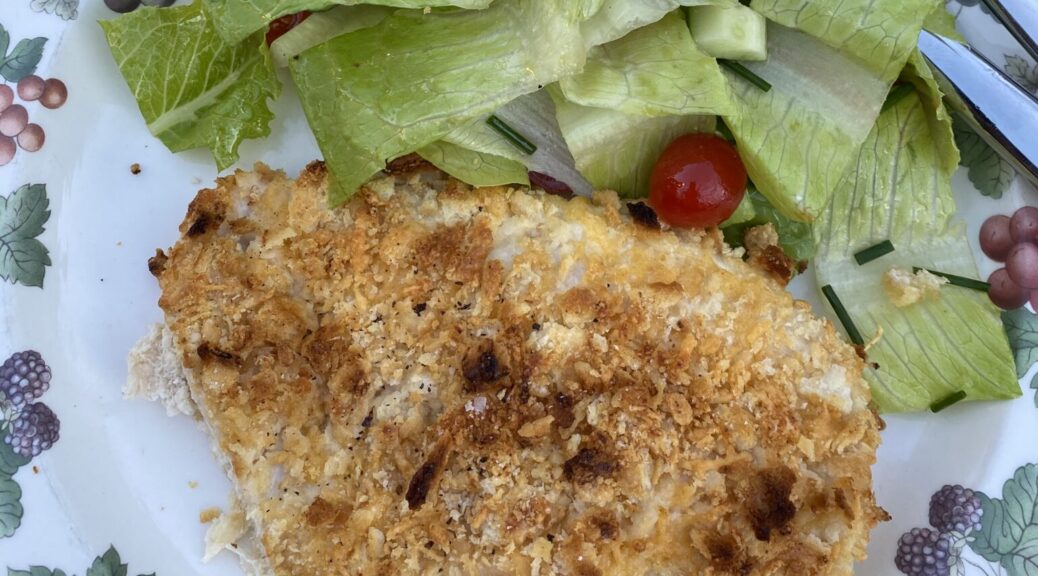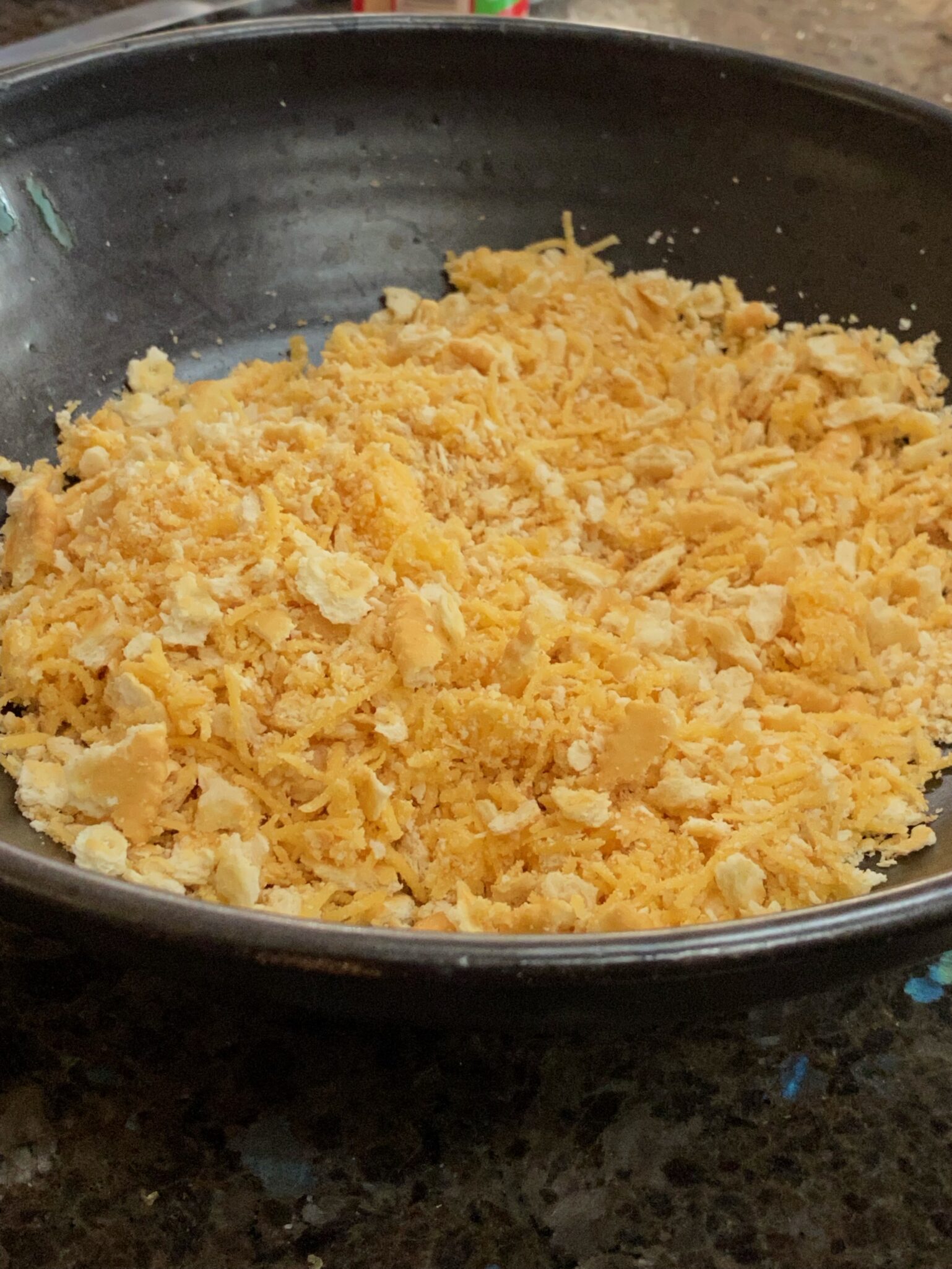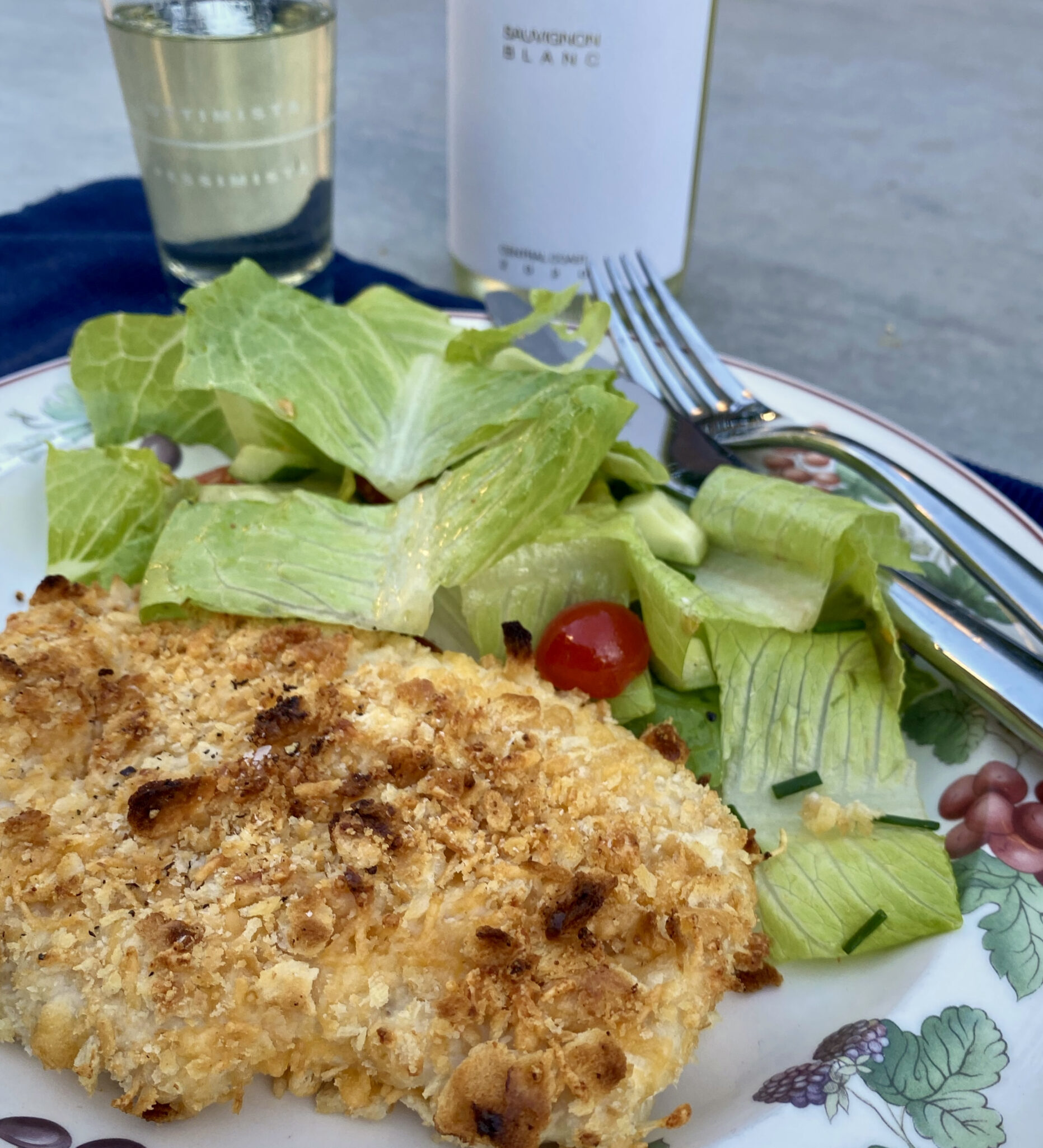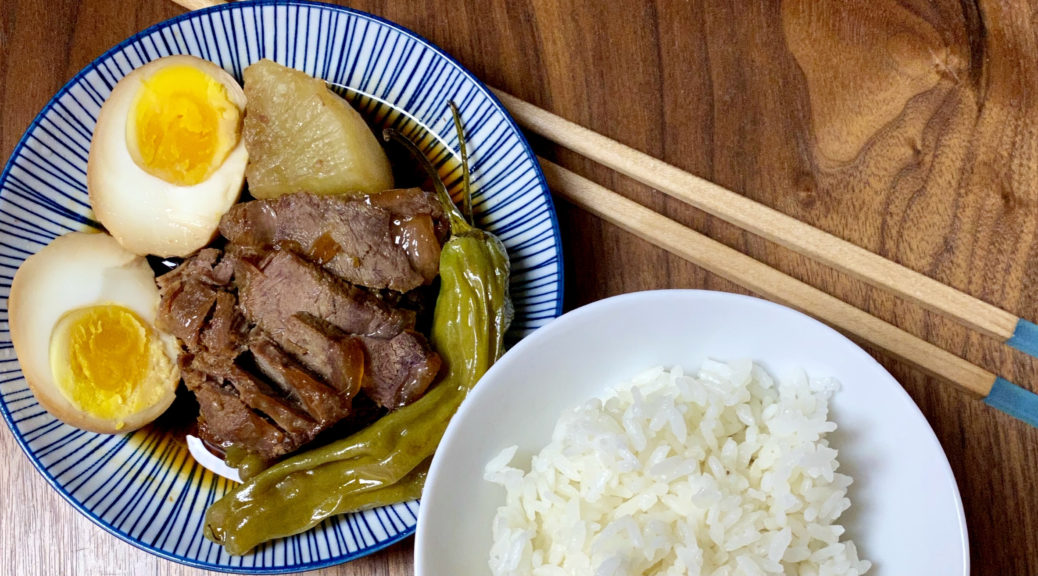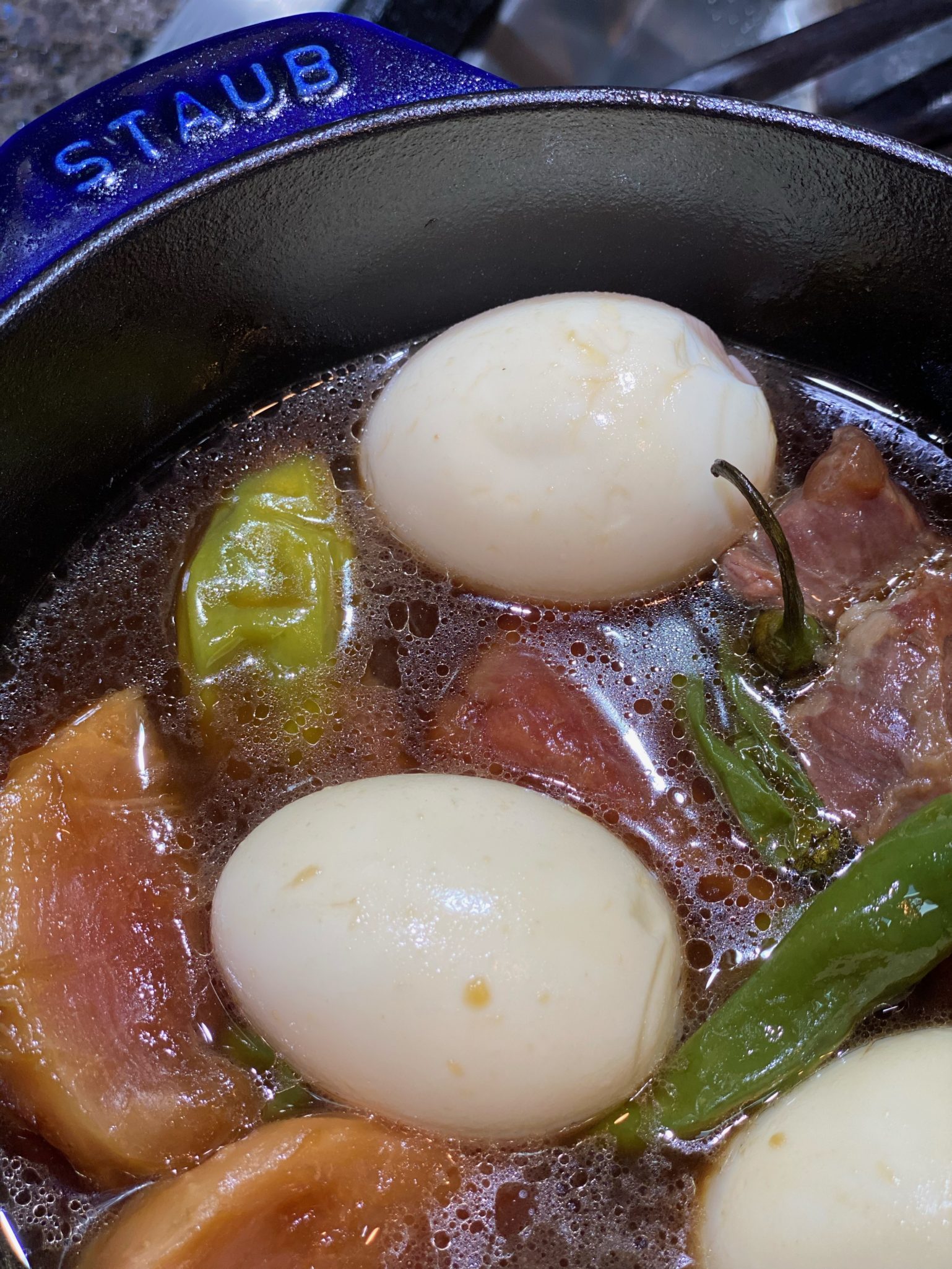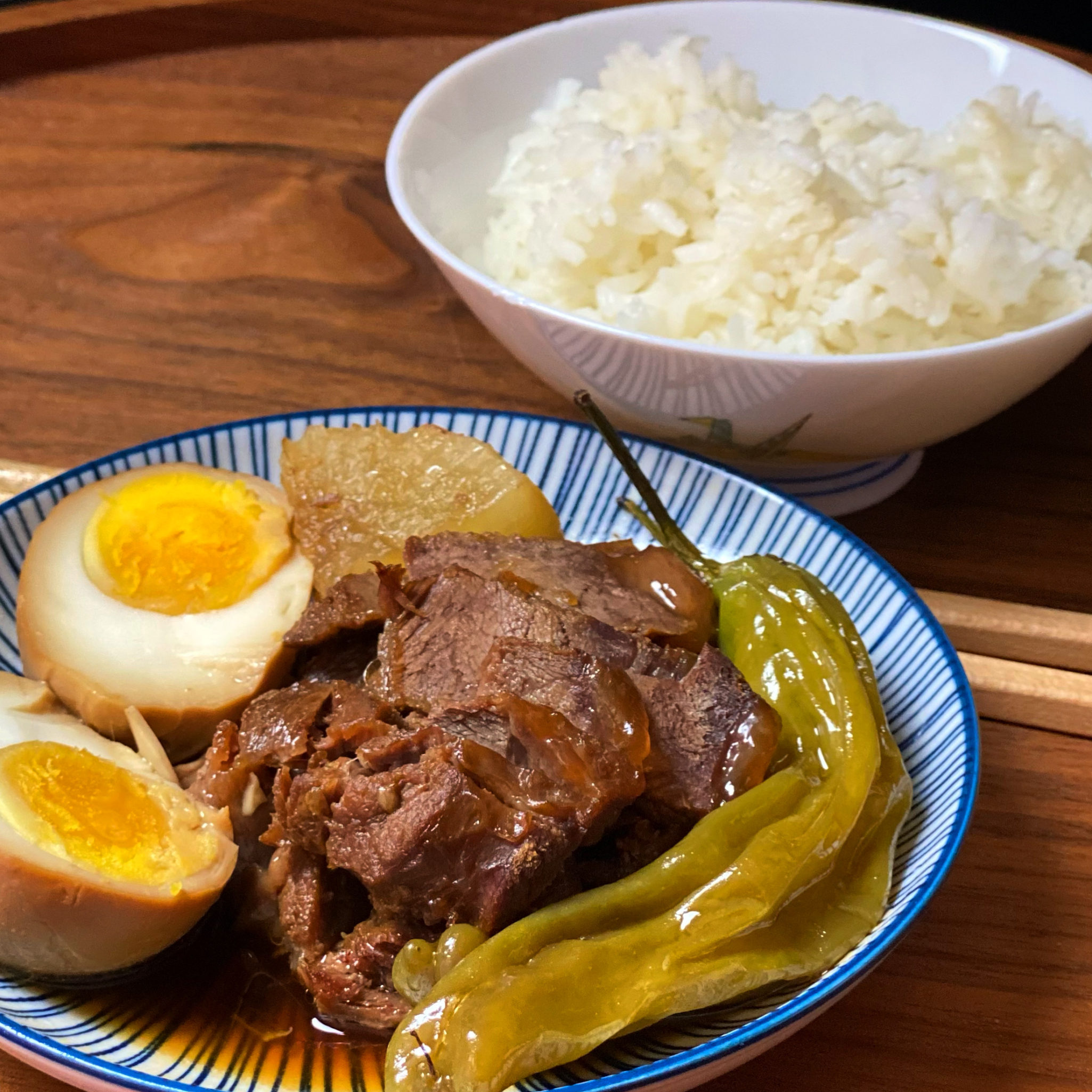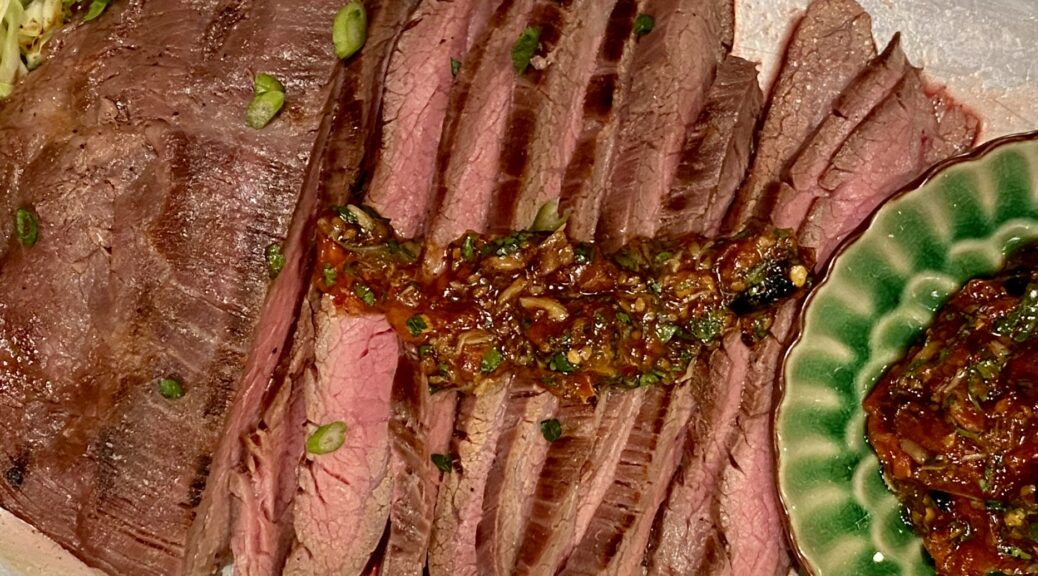
Crying Tiger Beef (Grillin’ and Chillin’)
A reel for Crying Tiger Beef had me salivating until I read the words “recipe coming soon”. Nooo, it looked so yummy I wanted to try it immediately. But, I understand. How many times have I posted a dish on IG or FB with the same caveat? Coming soon. So I turned to a tried and true cookbook, by
Tomatolly Off on a Thai-gent
The dipping sauce for Crying Tiger Beef in Simple Thai is a variant. Instead of the traditional one made with toasted rice and tamarind, this one has roasted cherry tomatoes. Since tomato season is upon us and I am a tomato FREAK, this was a no-brainer. Glad I did, it’s delicious. I will include both recipes for you to try. I expect a report on which version reigns supreme in your house.
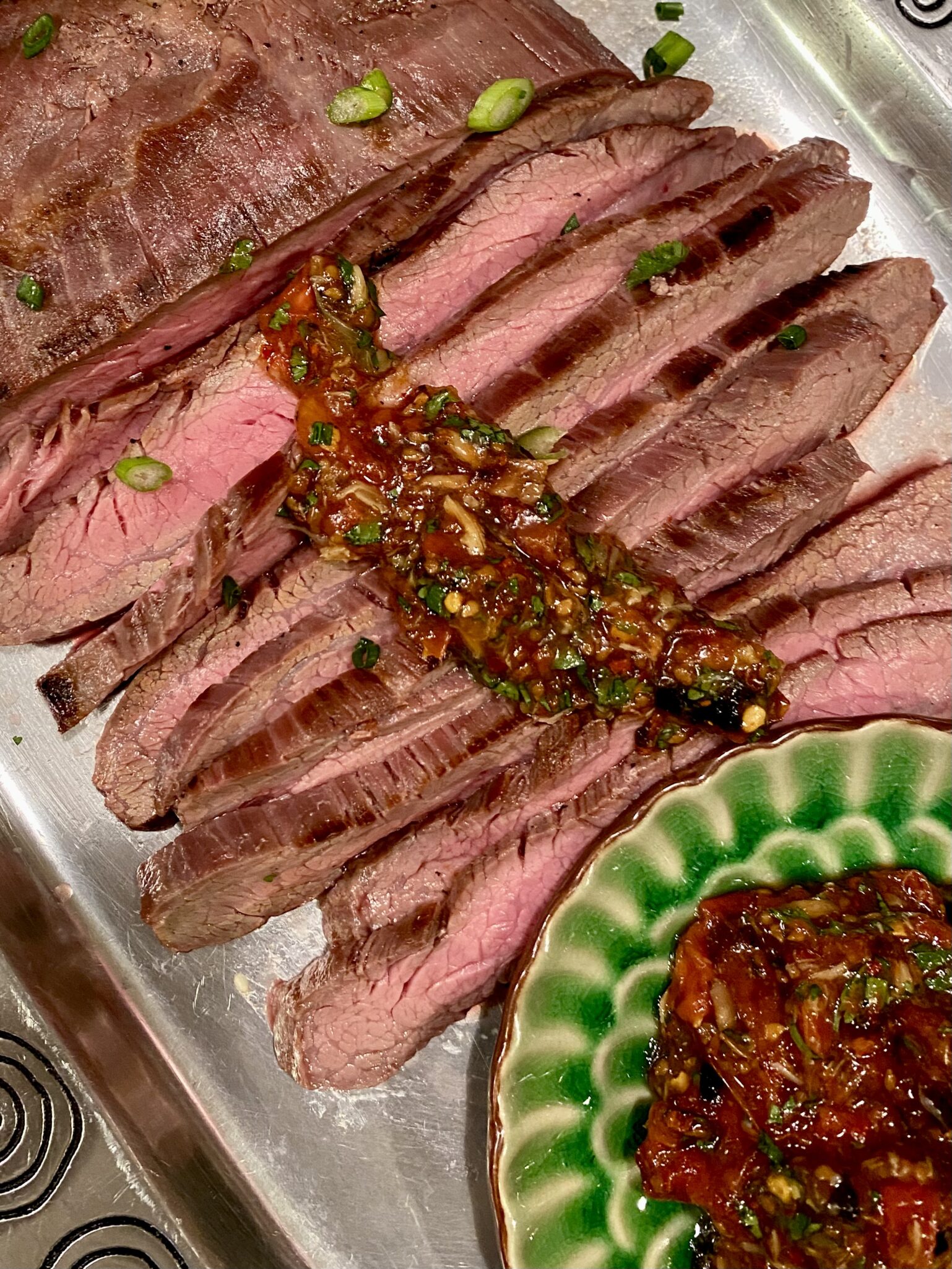
Where’s the Beef?
The marinade and sauce work with different cuts of beef. Wanna get fancy? Ribeye or NY strip steaks. A quick weeknight meal, flank steak, or skirt steak gets the 👍. Flanken-style short ribs would work well also.
I opted for the family-friendly flank steak, lean but flavorful and a great cut to barbecue. First, marinate your flank steak in a simple blend of oyster sauce, soy sauce, and oil. It’s amazing how it flavors the meat. I have both Chinese and Thai oyster sauce. I used the Thai version but the Chinese Oyster Sauce by LKK, with the lady and kid in a boat would be perfect and you really don’t need to go out and get Thai oyster sauce which will be much harder to find. You (West Coast peeps) can find LKK at major grocery chains, Costco, and most Asian grocery stores.
Sauce Me Up
As your meat marinates, make your sauce. Broil tomatoes, garlic, and shallots until soft with charred spots. Transfer tomato mixture to a food processor or mortar and pestle (shades of being a pharmacist). Pulse or pound until the mixture becomes a chunky sauce. Don’t purée! Pour the sauce into a bowl and add fish sauce, lime juice, chili flakes (to desired heat level!!), sugar and cilantro. I absolutely love this sauce, so much umami. I generally double the sauce recipe, it’s that good.
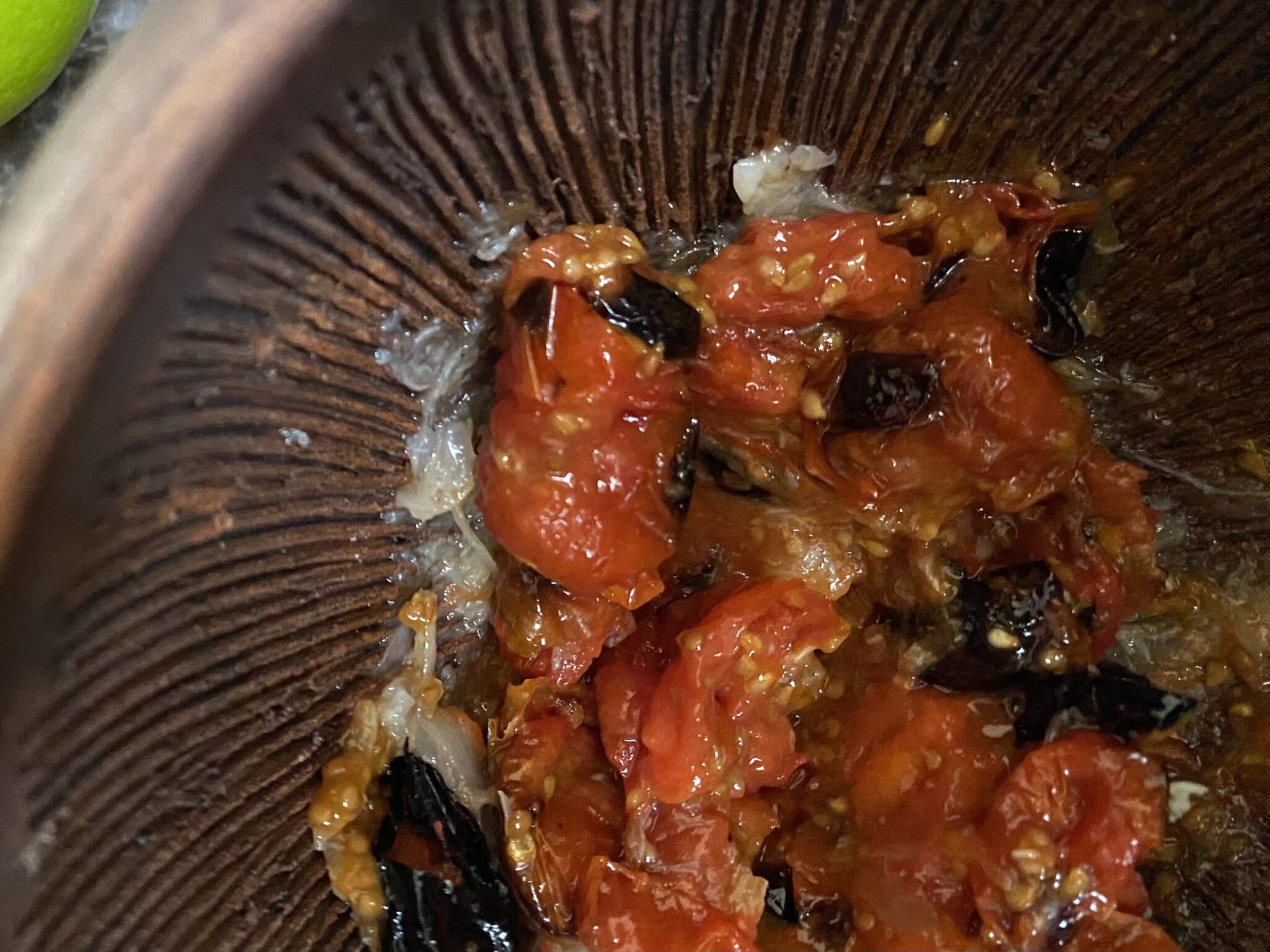
Palm Sugar-feel free to use brown sugar if you don’t have palm sugar. But if you want to, palm sugar comes in little squares or egg-shaped pieces, very dense. My recommendation would be to pulverize those little suckers (very cathartic) before using it. It would take forever and a day to melt. You’re welcome.
Crying Tiger Beef with Roasted Tomato Sauce
Ingredients
Marinade
- 1 tablespoons neutral oil
- 1 tablespoon soy sauce
- 1 tablespoon oyster sauce
- 1/2 teaspoon ground white or black pepper
- 1 flank steak, about 1 ⅔ pounds total This recipe works with steaks too. So if it is date night...2 nice ribeyes would be perfect!
Dipping Sauce
- 4 ounces cherry tomatoes
- 1 large shallot (1 oz) halved
- 3 large garlic cloves
- 1 tablespoon fish sauce
- 1 tablespoons fresh lime juice
- 1 tablespoon red pepper flakes I have never used over 1 teaspoon!
- 1/2 teaspoon packed light brown sugar or palm sugar
- 2 tablespoons coarsely chopped cilantro leaves and stems
Garnish
- 1 tbsp Glutinous or sticky rice, raw optional, but recommended
- Handful cilantro sprigs coarsely chopped, for garnish
- sliced cucumbers and tomatoes
Instructions
- For the beef, in a wide bowl or square pan, stir together the oil, soy sauce, oyster sauce, and pepper. Add the beef and turn to coat all sides.
- Prepare a medium-high fire in a charcoal grill or preheat a gas grill to medium on one half and medium-hot on the other half. Heat source shold be indirect. Place flank steak in center of grill. Grill about 4 minutes a side for medium rare. Remove from heat. Let meat rest about 5 minutes before slicing.
- Slice beef against the grain into 1/4-1/2 inch slices then arrange on a serving platter. Sprinkle with the ground toasted rice (optional) and garnish with the cilantro. Serve with the sauce.
Sauce
- Place tomatoes, unpeeled shallots, and garlic on a small sheet pan and broil, turning often until charred and squishy. This should take about 7-10 minutes.
- While the beef rests, finish the sauce. Using a mortar and pestle or bowl and a fork, smush the shallots and garlic into a rough paste. Add the tomatoes, blend to form a chunky sauce. Don't puree the tomatoes. Transfer to a serving bowl and stir in the fish sauce, lime juice, pepper flakes, sugar, and chopped cilantro. The sauce should have the consistency of a chunky salsa. Let it sit a few minutes, then taste; add more lime juice, fish sauce, and pepper flakes, if needed. The sauce should taste primarily sour and spicy and then salty with, with a hint of sweetness.
- You could make this in a food processor, just don't overprocess the sauce! Use the pulse button only to avoid this.
Toasted Rice Powder
- Place raw glutinous rice in a small skillet over medium-low heat. Swirl pan continuously until rice is golden brown and has a nutty aroma. This will take about 10-15 minutes. Remove from heat and pour into a mortar or small bowl. Set it aside to cool. Once cooled, grind in the mortar or in a small food processor, until rice becomes a powder.
- Sprinkle this on your meat right before serving.
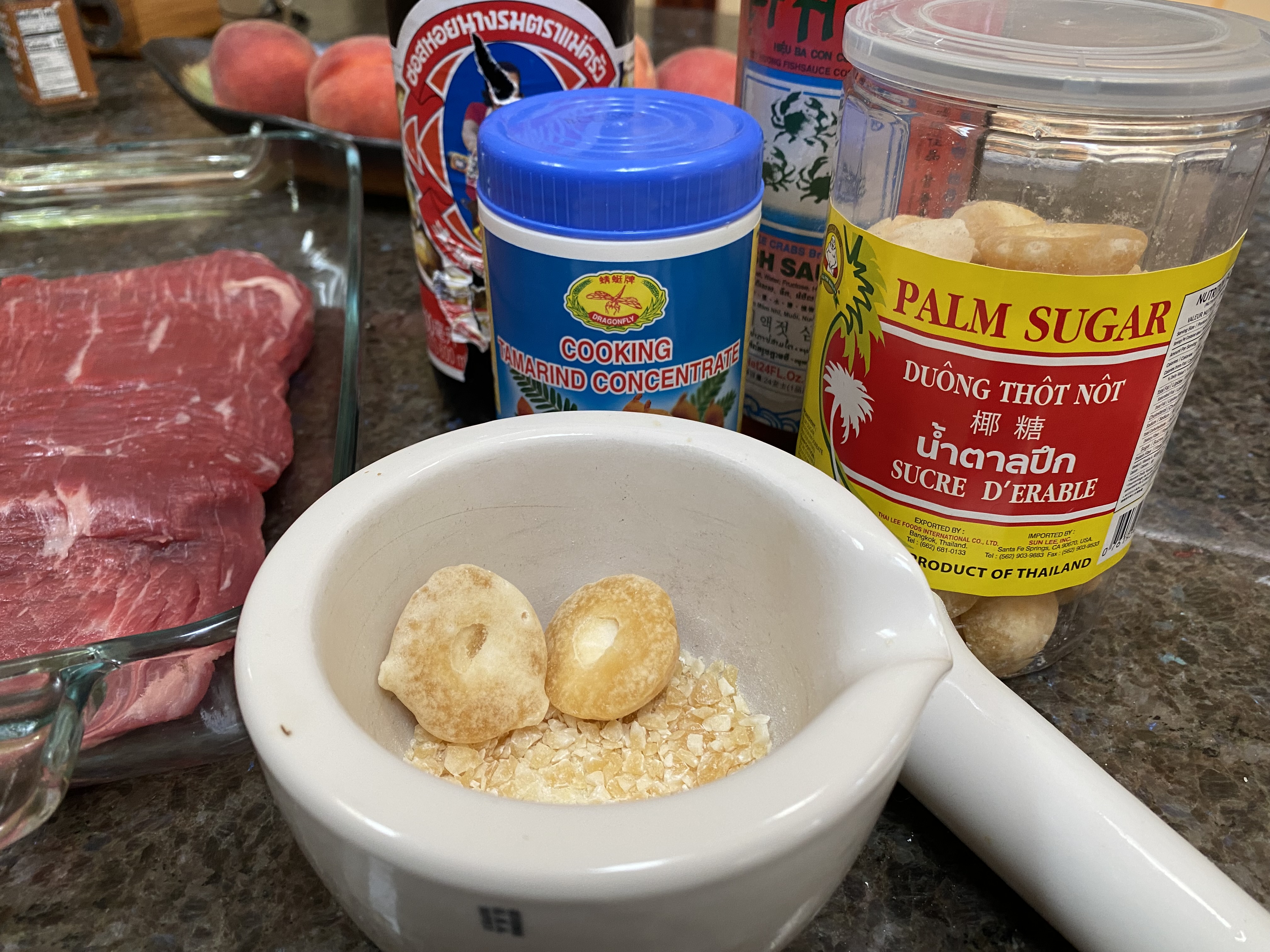
The traditional sauce is delicious too. It’s a little more difficult finding tamarind.
Tamarind is tangy and adds a sweet and sour flavor profile. You can find it as a paste or pulp to make a paste. Get the paste for convenience. The other component is toasted sweet rice powder. You can probably buy this but I always have sweet rice (glutinous rice aka sticky rice) on hand. The raw rice can be toasted on the stovetop and ground in a mortar and pestle or spice grinder.
Crying Tiger Beef with Tamarind Sauce
Ingredients
Marinade for Beef
- 1 tbsp oyster sauce
- 1 tbsp fish sauce
- 1 tsp brown sugar
- 2 x 200g 7 oz ribeye steaks (or any other steak cut you prefer)
- vegetable oil for brushing
- steamed rice or sticky rice to serve
Spicy Dipping Sauce-Nahm Jim Jaew
- 2 tsp raw glutinous rice also known as sticky rice
- 1 tbsp tamarind concentrate
- 3 tbsp fish sauce
- 1 tbsp lime juice
- 1 tbsp brown sugar
- 1 tbsp chilli flakes
- 1 small red shallot sliced into fine wedges
- 2 tsp finely chopped coriander cilantro
Instructions
- Combine the oyster sauce, fish sauce and brown sugar. Pour the mixture over the steaks and use your fingers to massage the marinade all over the steak pieces. Allow to marinate while you prepare the remaining ingredients.
- For the spicy dipping sauce, toast the rice in a dry frying pan over high heat until golden brown and fragrant (it should smell like popcorn). Use a mortar and pestle or a spice grinder to grind to a fine powder. In a bowl, combine the tamarind, fish sauce, lime juice, sugar, chilli flakes and toasted rice powder. Mix until well combined. Then stir through the shallot and coriander. Transfer to a small serving bowl and set aside until ready to serve.
- Heat a large heavy-based frying pan over high heat. Brush with oil. When hot, add the steaks and cook for 2-3 minutes, turning the steaks every so often until you get a nice charred colour. Then turn the heat to low and continue cooking (and flipping the steaks) for another 2-3 minutes (for medium rare) or until cooked to your liking. Before slicing, transfer to a cutting board and allow to rest for 3 minutes.
